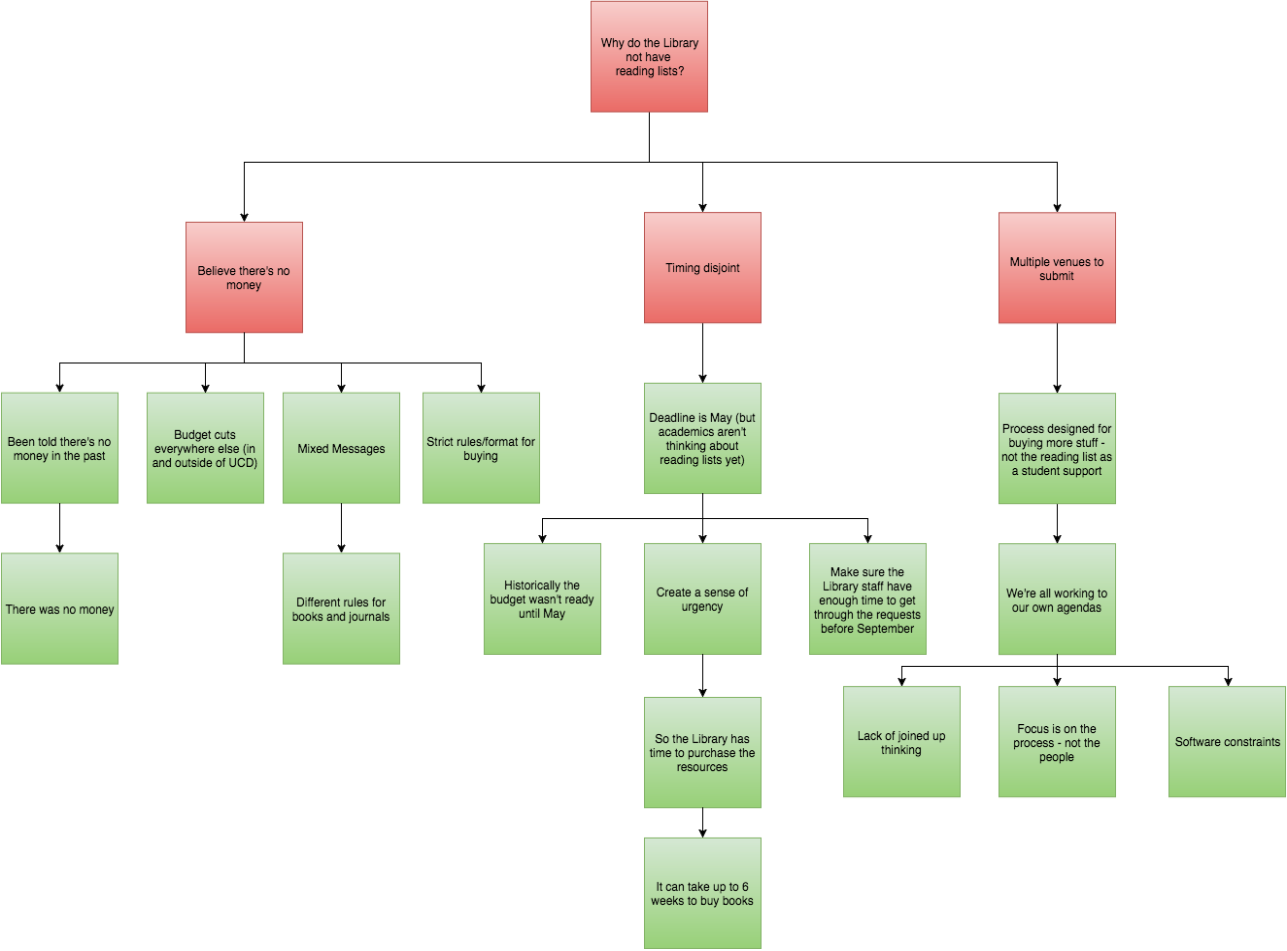The power of asking “Why?”
By Olga Murdoch, Agile Lead.
What is the tool used for?
The 5 Why’s is a very simple technique to help you get to the root cause of a problem so that you can solve the underlying cause and ensure the problem does not happen again. It is one of the most commonly used process improvement tools.
Why should someone use it?
We are all guilty of having assumptions about what might be the ultimate cause of the problems we experience at work. Without challenging our assumptions, we run the risk of spending time and effort resolving symptoms of a problem, without permanently preventing the problem from occurring again. The 5 Why’s guides us to questioning our own assumptions in a way that will either confirm what we thought we knew, or surprise us with a new answer.
Directions on how to use it?
Step 1: Involve the right people
When investigating the root cause of a problem, it is important to have the right people in the room. The right people are those who will be able to answer “Why?” from multiple perspectives. You might include people who have in-depth knowledge of the process as well as customers.
Step 2: Agree on the problem statement
Once you have the right people involved, it is important to spend time agreeing on how to define the problem you are addressing. Write down the problem statement to keep the team focussed on the same problem.
Step 3: Ask “why did this happen?”
Now that you know the problem you are addressing, simply ask the group “why did this happen?”. Write down the answer under the problem statement and move on to step 4.

Step 4: Check if we have reached a root cause
Take time to consider if this is the real and underlying root cause of the problem. If it is not, go back to Step 3 and ask “and why did this happen?”. Keep asking and checking until you get to the final cause.
You may not even need to do this five times… and it’s OK if it takes six or seven too! Be careful not to settle on a root cause too soon. This is where having the right people in the room is very important.
Step 5: Fix the root cause (therefore removing the symptoms)
Having finally discovered what the root cause of the problem is you now need to do something about it. Remember, fixing the root cause will not only fix the symptoms that have been experienced, but it will also prevent the problem from occurring again – this is the real goal.
Frequently asked question: What if there is more than one answer to “Why?”
That is fine! You can create branches like in the example below.
Example of where it has been used:
UCD Library teamed up with UCD Agile and the Curriculum Team to tackle a long standing problem of not receiving reading lists from module coordinators. This problem meant the the Library were not capable of fully supporting UCD students who wanted to borrow their reading list materials from the Library.
In an earlier post I described how a fishbone diagram was used to highlight a timing disjoint, amongst other problems, were found to be causes for the Library not receiving reading lists. This was followed up with a 5 Why’s exercise to explore the key problems further. For example we discovered that the root cause of the timing disjoint was the length of time it takes the Library to buy books. The Library quickly removed the deadline for submitting reading lists and sent out a reminder instead.
 The project delivering this (and other) improvements to the Reading List process resulted in a 50% increase in the number of modules supported by the Library.
The project delivering this (and other) improvements to the Reading List process resulted in a 50% increase in the number of modules supported by the Library.
Why not try out this tool yourself, and let me (olga.murdoch@ucd.ie) know how you get on. You should also check out the video above for another real life example of the power of 5 Whys.
Contact agile@ucd.ie for support on using tools such as this and others.
